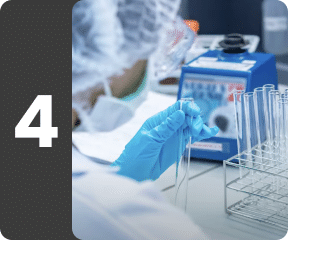Estradiol Test
Understanding Estradiol Test
What is Estradiol Test?
An estradiol test measures the amount of the hormone estradiol in your blood. Estradiol is primarily a female sex hormone which is produced by the ovaries, breasts, and adrenal glands. Doctors may order an estradiol test in relation to a person’s fertility, puberty and menopause in females. During their reproductive years, women usually have their highest levels of estradiol. This hormone is considered to be one of the best markers for ovarian function.
An estradiol test alone cannot diagnose a specific disease. If the test results show low or high levels of estradiol, a doctor may recommend further tests to help pinpoint a diagnosis.
What is Estradiol Test used for?
To diagnose hypogonadism (production of fewer sex hormones) in females
To evaluate the cause of oligomenorrhea (infrequent menstruation) and irregular menstruation in females
To evaluate the cause of feminization in males like gynecomastia (enlarged breasts)
To evaluate the cause of precocious (early) and delayed puberty in females
To evaluate the symptoms of menopause like abnormal vaginal bleeding
To monitor follicle development in case of infertility in women
To monitor treatment in case of hormone replacement therapy taken by women after menopause
To evaluate the lack of secondary sexual features, lack of muscle mass, delayed puberty in males
What does Estradiol Test measure?
Estradiol test measures the levels of estradiol in blood. Estradiol is a form of estrogen hormone which plays an important role in the function and development of reproductive organs and in the formation of secondary sex characteristics in females. It regulates the menstrual cycle in women along with progesterone. Other functions of estrogen along with progesterone include the growth of breasts and uterus. Estrogen hormone is also found in men. It regulates growth and metabolism in both males and females. In men, estradiol is produced in testicles while in pre-menopausal women it is produced in ovaries. In postmenopausal women, estradiol is converted into estrone. Estradiol is present in high levels in non-pregnant and pre-menopausal women. Depending upon the age of the women and her reproductive status the values of estradiol varies. It is considered to be one of the good markers as regards to ovarian function.
At birth, the levels of estradiol are high but the levels fall within a few days and become minimal during early childhood. As puberty approaches the levels of estradiol rise. During the menstrual cycle, its levels vary depending upon the ongoing menstrual cycle phase. During menopause, the levels of estradiol fall as the production by ovaries decreases.
Interpreting Estradiol Test results
Interpretations
High levels of Estradiol may indicate:
Puberty before time (precocious puberty) in girls
Ovarian tumors in females
Tumors of adrenal glands in men and women
Gynecomastia (enlarged breasts) in men
Testicular tumors
Delayed puberty in males
Hyperthyroidism in men and women
Cirrhosis in men and women
Low levels of Estradiol may indicate:
Hypopituitarism
Hypogonadism in females (the abnormal function of ovaries)
Following menopause
Conditions in which female sexual characteristics are underdeveloped like Turner’s Syndrome
Frequently Asked Questions about Estradiol Test
Q. Is there any preparation required before the test?
Q. Is there any risk associated with this test?
Q. Any additional information I should know about the estradiol test?
Q. Do any medicines have an effect on the level of estradiol?
Q. What other tests might be required if estradiol test results are not normal?
Book a Estradiol Test test at home near me





Other tests









